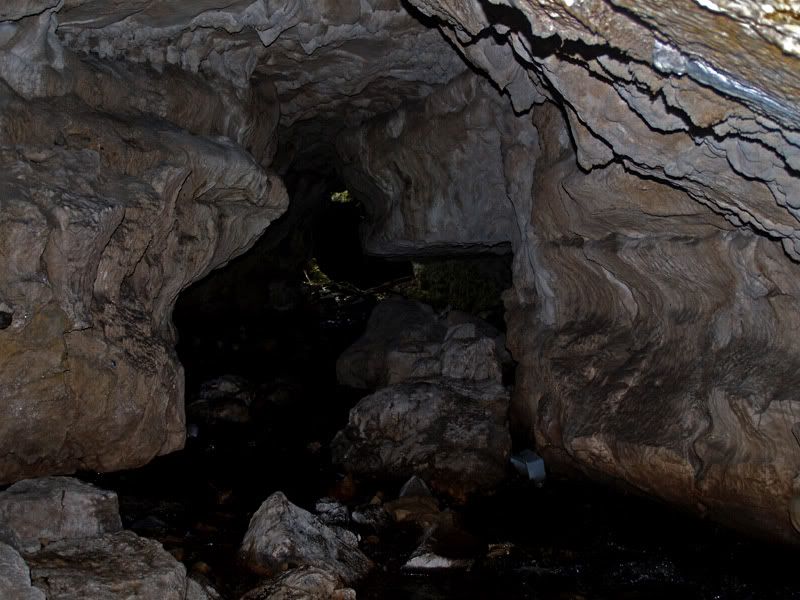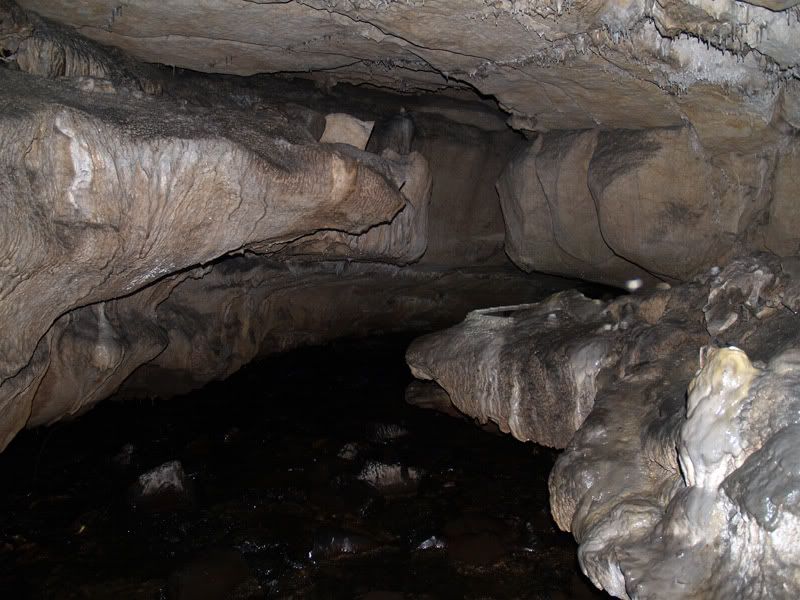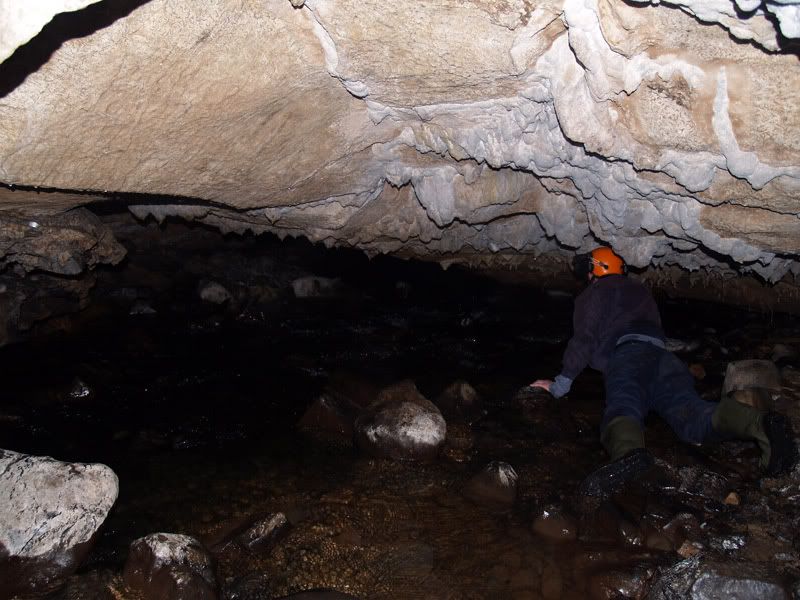Hi Penguin,
The first two photos show a vadose streamway, you can see that the passage originally started at roof height and would have been an eliptical tube formed along the weakness of a bedding plane. It would have been phreatic at this point, (i.e completely full of water). At some point the stream would have started down cutting due to external influences, perhaps erosion in the river outside the resurgence lowered the base level, and the cave stream started cutting the floor away more than the walls.
An air space would now be present above the water and all erosion would be on the stream bottom (and lower walls), as the stream down cuts the passage above is left high and dry. This forms a "vadose canyon" with the stream now just taking up a small part of the cross section of the passage.
The bottom of the passage in your photos is quite wide and much wider than the higher canyon, I would guess this is either because the rock here is much weaker (at a bedding plane joint perhaps) and more easily eroded, or that the external factors that caused the down cutting have been negated somewhat (water has reached a new base level).
The water now appears to have eroded the sides of the passage a lot and stopped down cutting. The sediment on the floor supports this theory.
There are two possibilities for the lower passage. One is that the passage is as large as the rest but buried in the sediment on the floor and the other is that the lower passage remained below the base level of the resurgence so there was no vadose down cutting there.
Where are the caves? This might help with this remote diagnostic of speleogenesis.










